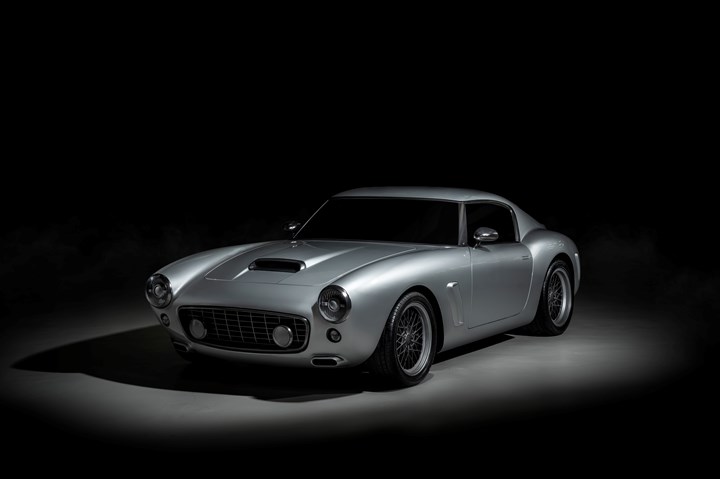RML Short Wheelbase vehicle nears completion
While it has an unusual name, this limited-edition British sports car is fast, stylish and composites-intensive.
Share

The RML Short Wheelbase has a classic design yet contemporary amenities (yes, including Apple CarPlay). Photo Credit: RML
Contract manufacturer of racing and road cars RML (Wellingborough, U.K.) is just about to begin the production of its Short Wheelbase vehicle. The company, which plans to produce a total of 30 composite-intensive cars, has fitted the 5.5-liter, 578-horsepower (185+ mph) Ferrari V12 engine into the chassis and will then be running durability testing.
The RML Short Wheelbase — yes, that is its name (and the wheelbase is 98.4 inches) — is based on the Ferrari 550 Maranello. The designing and engineering of the vehicle itself, however, is being conducted by the specialist manufacturer. “Having a fully painted body-on-chassis with engine installed is a real landmark in the Short Wheelbase’s birth,” says Michael Mallock, RML’s CEO.
The vehicle has several notable features. One is the steel chassis that is surrounded by carbon fiber components. There are two main “clams” forming the body shell, which are adhesively bonded together. There is a front clam that goes from the A-pillars forward. The rear clam has everything to the rear of the A-pillars, including the windshield and backlight openings, door openings and trunk openings. The hang-on panels — hood, doors and trunk lid — are all produced with carbon fiber as well. While the entire body is painted, a clear primer and smoked carbon lacquer show off some of the composite components (e.g., around the door frame).
RML outsourced the production of the composite elements but its personnel perform the finishing and the assembly of the panels. When the team first assembled the sections, they found that 99% of the composite components were within a 2.5-millimeter tolerance and 60% were within a 1-millimeter tolerance.
Moreover, in testing, the company determined that the composite structure contributes to safety. RML ran a roof crush test and determined that just 15% of the permissible displacement occurred after a 23.9-kilonewton load was reached in a roll-over simulation.
The vehicle itself has a “dry weight” of 3,234 pounds (1,470 kilograms) — the British measure the mass of a vehicle without fluids, so “dry.” Putting this weight in context, consider the Mazda Miata, another two-seater. It has a curb weight of 2,403 pounds, although it is primarily a steel structure with some aluminum components (fenders, hood and trunk lid). However, the Short Wheelbase is longer (167.8 inches versus 154.1 inches) and wider (76.9 inches versus 68.3 inches).
RML says it is prepping two customer cars. Six months (per car) will be required for production.
Related Content
-
Cryo-compressed hydrogen, the best solution for storage and refueling stations?
Cryomotive’s CRYOGAS solution claims the highest storage density, lowest refueling cost and widest operating range without H2 losses while using one-fifth the carbon fiber required in compressed gas tanks.
-
Plant tour: Albany Engineered Composites, Rochester, N.H., U.S.
Efficient, high-quality, well-controlled composites manufacturing at volume is the mantra for this 3D weaving specialist.
-
PEEK vs. PEKK vs. PAEK and continuous compression molding
Suppliers of thermoplastics and carbon fiber chime in regarding PEEK vs. PEKK, and now PAEK, as well as in-situ consolidation — the supply chain for thermoplastic tape composites continues to evolve.

.jpg;width=70;height=70;mode=crop)













.jpg;maxWidth=300;quality=90)
